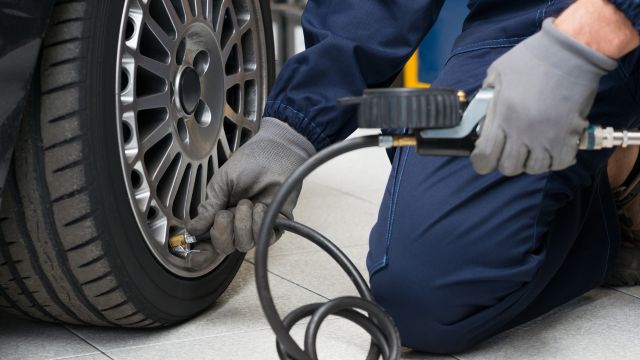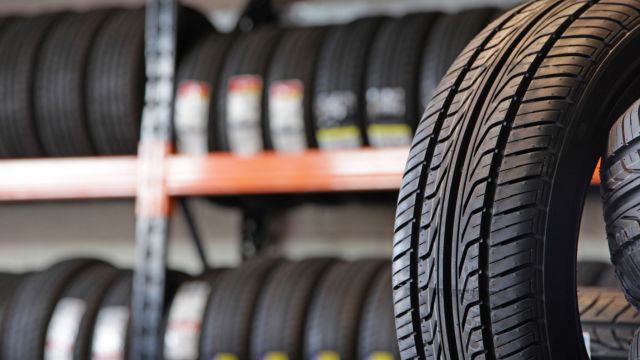Have you ever glanced at your car tyres and thought they looked a bit deflated? Don’t fret! Putting air in your car tyres is a straightforward task every driver can master. It’s akin to ensuring your shoes fit properly – it’s all about comfort, safety, and performance on the road. Let’s dive into the nitty-gritty of tyre inflation.
Step-by-Step: How to Put Air in Your Tyres
- Find a safe spot: Park your car on level ground and turn off the engine. Ensure you’re in a safe location, away from traffic.
- Locate the correct pressure: Check your car’s manual or the sticker inside the driver’s door frame for the recommended tyre pressure. Remember, front and rear tyres might require different pressures.
- Remove the valve caps: Unscrew the small caps from each tyre valve. Place them somewhere safe – they’re tiny and easy to lose!
- Check current pressure: Press your tyre pressure gauge firmly onto the valve stem. You’ll hear a brief hiss, and the gauge will display the current pressure.
- Compare and calculate: Note the difference between the current and recommended pressures. This is how much air you need to add (or remove).
- Adding air:
- Position the air pump nozzle securely on the valve stem.
- Turn on the pump and add air in short bursts.
- Check the pressure frequently with your gauge.
- Stop when you reach the recommended pressure.
- Removing excess air (if needed):
- If you’ve added too much, press the small pin in the centre of the valve stem.
- You’ll hear air escaping. Check the pressure again.
- Repeat until you reach the correct pressure.
- Replace valve caps: Once you’ve achieved the right pressure, screw the valve caps back on securely.
- Repeat the process: Go through steps 3-8 for all four tyres, including the spare if your car has one.
Remember, it might take a few attempts to get it spot on. Don’t be discouraged – practice makes perfect!
Essential Tools for the Job
Before you embark on your tyre-inflating adventure, gather these tools:
- Tyre pressure gauge: This crucial tool measures the air pressure in your tyres. Digital gauges are easy to read, but traditional pencil-style gauges work well too.
- Air compressor: Most petrol stations have these. For convenience, consider investing in a portable compressor for home use.
- Your car’s manual: This contains vital information about your vehicle, including the recommended tyre pressures.
- Valve caps: These small but essential components protect your tyre valves from dirt and debris.
- Torch: A torch can be incredibly helpful if you check your tyres in low-light conditions.

The Crucial Importance of Proper Tyre Pressure
Maintaining the correct tyre pressure isn’t just a suggestion – it’s a crucial aspect of vehicle maintenance. Here’s why it matters so much:
- Safety First: Properly inflated tyres provide better grip on the road, improving handling, braking, and overall safety.
- Fuel Efficiency: Correct tyre pressure reduces rolling resistance, so your engine doesn’t have to work as hard. This translates to better fuel economy and savings at the pump.
- Tyre Longevity: Tyres inflated to the right pressure wear more evenly and last longer, saving you money on replacements.
- Improved Handling: Your car will respond better to steering inputs and provide a smoother, more comfortable ride.
- Environmental Impact: Better fuel efficiency means lower emissions, improving the environment.
The Perils of Incorrect Tyre Pressure
Neglecting your tyre pressure can lead to a host of problems:
- Uneven Wear: Under-inflated tyres wear more on the edges, while over-inflated tyres wear more in the centre.
- Reduced Grip: Improper inflation can reduce the tyre’s contact patch with the road, decreasing traction.
- Increased Stopping Distance: Under-inflated tyres can increase your stopping distance, especially in wet conditions.
- Risk of Blowouts: Severely under-inflated tyres can overheat and potentially fail catastrophically.
- Decreased Fuel Efficiency: Both under and over-inflated tyres can negatively impact fuel economy.
- Compromised Handling: Incorrect tyre pressure can lead to poor handling, potentially causing loss of control in emergency situations.
When to Check Your Tyres
Regular tyre pressure checks should be a part of your vehicle maintenance routine. Aim to check your tyres:
- At least once a month
- Before long journeys
- When there’s a significant change in temperature (tyres lose about 1 PSI for every 5.5°C drop in temperature)
- After hitting a pothole or kerb
- If you notice uneven wear or handling issues
The best time to check your tyre pressure is when the tyres are “cold” – meaning the car hasn’t been driven for at least three hours. This gives you the most accurate reading.
Finding the Right Pressure for Your Tyres
Knowing the correct pressure for your tyres is crucial. Here’s where to look:
- Your car’s manual: This is the most reliable source for tyre pressure information.
- Driver’s door frame: Many cars have a sticker with tyre information.
- Fuel filler cap: Some vehicles have tyre pressure information here.
- Online resources: Manufacturer websites often provide tyre pressure information for specific models.
Important: The pressure listed on the tyre sidewall is the maximum pressure the tyre can hold, not the recommended pressure for your vehicle.

Top Tips for Happy Tyres
- Invest in a good-quality pressure gauge for accuracy.
- Check your tyres visually for any signs of damage or unusual wear.
- Rotate your tyres regularly to ensure even wear.
- Always check your spare tyre – you never know when you need it!
- Consider nitrogen inflation for more stable tyre pressure over time.
- If you’re unsure about anything, consult a professional tyre fitter.
Wrapping It Up
Putting air in your car tyres might seem like a small task, but it’s a crucial aspect of vehicle maintenance. It keeps you safe, saves you money, and helps your car perform at its best. With regular checks and proper inflation, you’re taking excellent care of your vehicle and ensuring a smoother, safer driving experience.
Remember, if you’re ever in doubt, don’t hesitate to seek help from a professional. Many petrol stations and tyre shops are happy to assist and can offer valuable advice.
Air Tyres FAQs

Hey there! I’m Ciarán, a marketing guru by day and a car enthusiast by, well, all the time. I might not fix engines, but I love diving into the latest car trends and tech to bring you fun and easy-to-understand insights. Whether you’re a petrolhead or just trying to pick your next ride, I’m here to help you figure it all out. Let’s talk cars and maybe have a few laughs along the way!



